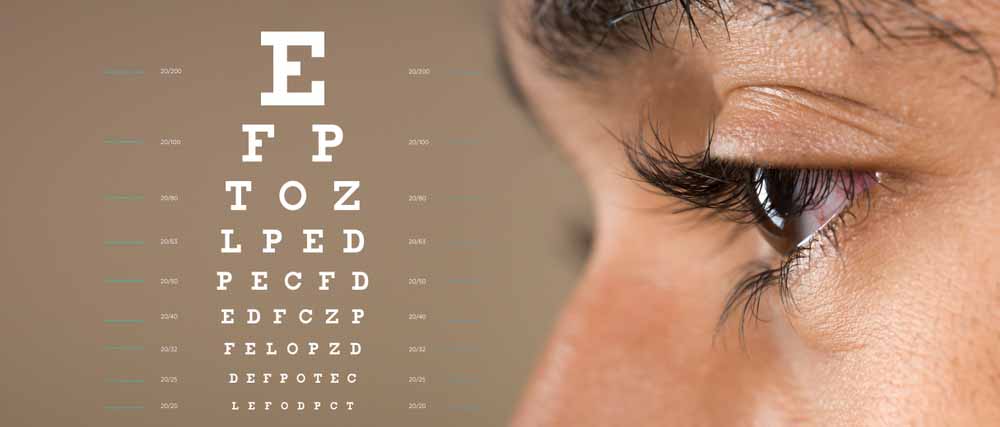Myopia or near-sightedness is a type of ametropia. The term ametropia means that due to abnormalities within the refractive structures of the eye or due to its abnormal size and/or shape, light rays from a distant object cannot be focused onto the part of the retina (the innermost, light-sensing layer of the eye) which forms the clearest image (the fovea centralis).


In myopic or near-sighted individuals, light rays from a distant object are refracted such that they are focused in front of the retina without any accommodation (change in shape) of the crystalline lens. Thus individuals suffering from myopia are able to see near objects clearly but have trouble making out distant objects. Myopia may occur due to:
- Increased curvature of the refractive media of the eye (cornea or lens)
- Increased axial length of the eyeball: This causes light rays to be focused in front of the eyeball even if there are no abnormalities within the refractive media of the eye
- Increase in the refractive index of the crystalline lens m: This may occur due to opacification
- If the crystalline lens is displaced anteriorly, it causes the light to be focused in front of the retina
Myopia may be classified into two types depending on the age onset. These include:
- Early-onset or Congenital myopia: Newborn babies may be born with myopia. This can be noticed in the converging and squinting action adopted by babies.
- Late-onset myopia: This develops later on in life. It may originate at 5-10years of age with a steady worsening of vision up til young adulthood. Late-onset myopia is classified into:
- Simple myopia: In this subtype, the refractive error does not typically exceed 6D.
- Pathological myopia: In this subtype, the refractive error worsens much more rapidly and may reach 15-20D by young adulthood. This subtype is accompanied by destruction of the retina. Some of the complications that may result from pathological myopia include:
- Retinal detachment
- Glaucoma


Symptoms:
The main complaints of myopic individuals include:
- Blurring of distant vision
- Squinting of the eyes
Evaluation of disease:
To confirm your diagnosis, your doctor may ask you to read alphabets/signs placed at a certain distance. Your eyes may also be examined using different apparatus. An ultrasound test, or a test to chart the curvature of your cornea may also be ordered.
Treatment:
Treatment of myopia may be conservative or surgical.
- Conservative (optical) therapy options are preferred for individuals less than the age of 25. This is because after the age of 25, the eyeball stops growing and the refractive error stabilises. Conservative therapies include the use of:
- Spectacles with concave lenses
- Contact lenses
- Surgical therapies: Your doctor is best equipped to decide whether or not surgery will correct your myopia. Surgical correction of myopia is done by performing surgery on the cornea or the crystalline lens.
Prevention:
It has been established that long periods of eye strain or focusing on near objects causes and worsens myopia. Conversely, studies have shown that outdoor activities help prevent myopia. Proper eye care and follow-up is essential to promote eye health.
References:
Schiefer, U., Kraus, C., Baumbach, P., Ungewiß, J., & Michels, R. (2016). Refractive errors. Deutsches Arzteblatt international, 113(41), 693–702. https://doi.org/10.3238/arztebl.2016.0693
Baird, P. N., Saw, S. M., Lanca, C., Guggenheim, J. A., Smith Iii, E. L., Zhou, X., Matsui, K. O., Wu, P. C., Sankaridurg, P., Chia, A., Rosman, M., Lamoureux, E. L., Man, R., & He, M. (2020). Myopia. Nature reviews. Disease primers, 6(1), 99. https://doi.org/10.1038/s41572-020-00231-4
Disclaimer: The information on this blog is intended to educate and inform and is not a substitute for medical advice, diagnosis or treatment. Prior to acting on the information provided on this blog, you should consult your doctor/healthcare professional.
